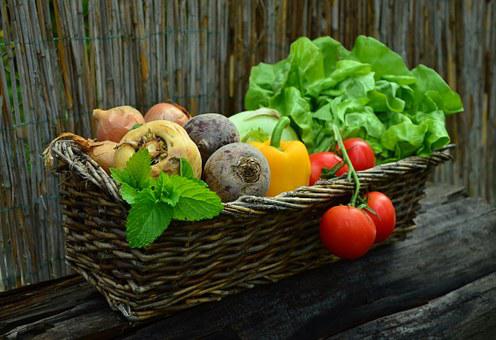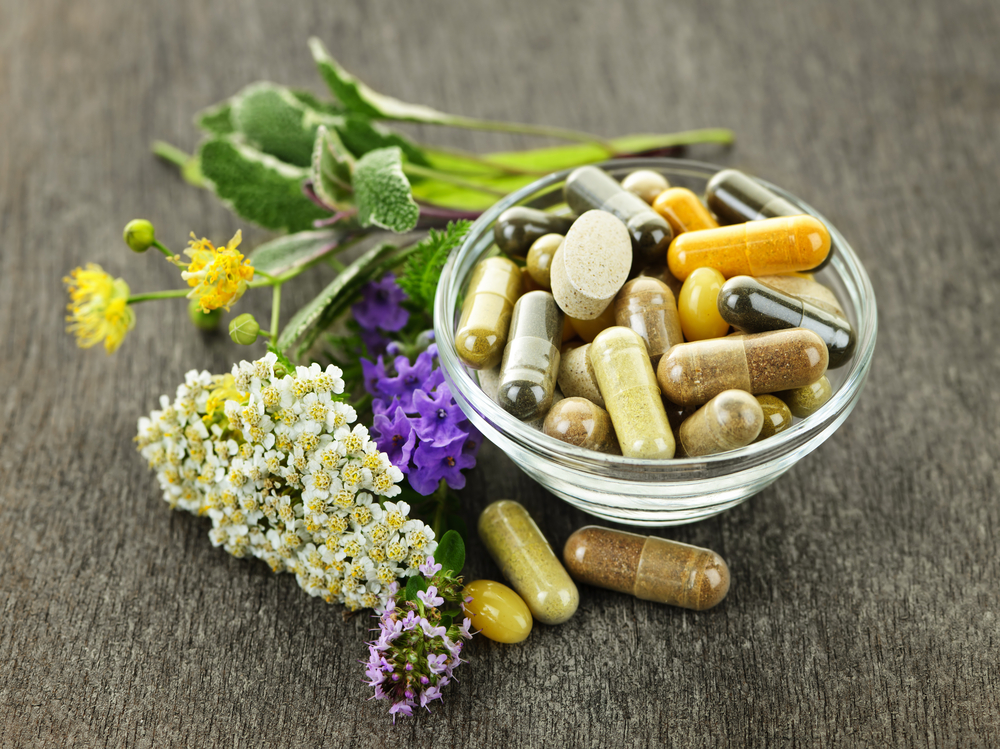Diabetes is a problem with your blood sugar levels being too high The disorder is characterized by increased thirst, urination, hunger, fatigue, blurred vision, and unexplained weight loss.
A diabetic diet chart can help control the disorder and its symptoms.
There are two types of diabetes, type 1 and type 2. Both involve problems with insulin, a hormone that regulates blood sugar. In the case of the latter, the pancreas produces very little insulin.
The milder type of diabetes, type 2, is when the pancreas produces some insulin, but it’s not enough.
Although diabetes is a dangerous disease, learning how to manage it is key. Eating a healthy diet and taking good care of your body are important for managing the disorder.
Diabetic Food List
Certain foods help to regulate blood sugar levels, which is an important aspect of managing diabetes. Foods that help to prevent diabetes complications such as heart and kidney diseases are extremely beneficial.
The following are some foods that can help you with your sugar problem.
1. Leafy Greens
Green vegetables that have lots of leaves are low in calories and very good for you. Since they contain few digestible carbs, they are effective in controlling blood sugar levels.
For example, vitamins and minerals like vitamin C can be found in abundance in spinach, kale, and other leafy greens. The study found that people with type 2 diabetes who took vitamin C had lower fasting blood sugar levels than those who didn’t. Even high blood pressure levels.
2. Cinnamon
In addition to its antioxidative features, cinnamon is also celebrated for its supposed medicinal properties, one of which is the regulation of blood sugar levels – a vital component in the management of diabetes. Cinnamon has been shown to help reduce blood sugar levels and improve insulin sensitivity in several controlled studies.
You should limit your intake of cassia cinnamon to less than a single teaspoon a day.
Cinnamon can cause health problems if too much is consumed because it contains coumarin. However, Ceylon cinnamon has a lower concentration of coumarin.
3. Fatty Fish
Someone with diabetes can eat salmon, sardines, and mackerel. The fatty fishes that are high in DHA and EPA are great for your heart health.
Making sure to get enough of these fats in your diet could be especially beneficial for diabetics, who are at a greater risk for developing heart disease.
DHA and EPA help reduce inflammation markers. It also helps the arteries to work better after eating and protects the cells that line the blood vessels. studies that provide evidence support the above statement.
Eating fatty fish has been shown to significantly reduce triglyceride levels and inflammatory markers in elderly people who eat it more than 5 times a week for around 8 weeks.
The protein in these foods will help you feel full for a longer period of time, and will also increase your metabolism.
4. Chia Seeds
Chia seeds have a high fiber content but relatively low levels of digestible carbs. This is because the viscous fiber found in these seeds lowers blood sugar levels. It does that by slowing down the rate at which food is moving through the gut and getting absorbed.
Chia seeds contain fiber which helps people feel full and prevents them from overeating and gaining weight. Chia seeds have been shown to help reduce blood pressure and markers of inflammation.
5. Greek Yogurt
Board-certified endocrinologist Dr. Osama Hamdy says that Greek yogurt is a great dairy option for diabetics. “Greek yogurt can help control blood sugar levels and reduce the risk of heart disease,” he says. This is partly due to the presence of living microorganisms in them.
Studies have also found that people with type 2 diabetes who eat yogurt and other dairy products tend to lose weight and have a better body composition. Since Greek yogurt has fewer carbs than regular yogurt, it can be a good substitute for meat.
Its high protein content also helps with weight loss by making you less likely to overeat and by helping to balance your carb intake. Adding Greek yogurt to your diet can help improve your health in many ways.
6. Flaxseeds
Flaxseeds, also known as Alsi in India, contain insoluble fiber made up of lignans. Lignans are a type of phytoestrogen, which is a plant compound that mimics the hormone estrogen in the body. It has been shown to reduce the risk of heart disease and improve blood sugar control.
The study showed that people with type 2 diabetes who consumed flaxseed lignans for 12 weeks had a significant improvement in hemoglobin A1c.
The study found that those who ate the most flaxseed had a lower risk of developing a stroke. The high content of viscous fiber in their diet helps improve gut health, insulin sensitivity, and the feeling of fullness in the body.
7. Nuts
Nuts contain fiber, but the level of digestible fiber varies. Studies of different types of nuts have shown that eating them can help reduce inflammation and improve HbA1c levels.
It has also been shown to lower blood sugar and LDL levels in the body. Thus, great for including in a diabetic diet plan
The study found that people who added 30g of walnuts to their daily diet for a year lost weight. The participants not only saw improvements in their body composition, but also significantly lowered their insulin levels.
In people with type 2 diabetes, high insulin levels are linked with obesity. Researchers believe that extremely high insulin levels may lead to serious diseases such as Alzheimer’s disease and cancer.
8. Apple Cider Vinegar
The sugar content in apples is fermented into acetic acid, which contains very few carbs.
In addition to this, apple cider vinegar also seems to improve insulin sensitivity and lower fasting blood sugar levels. ACV reduced blood sugar levels by 20% when consumed with meals that contain carbohydrates.
Another study showed that people who are struggling to control their diabetes saw a 6% reduction in their fasting blood sugar when they were given two tablespoons of apple cider vinegar before they went to sleep.
9. Garlic
Garlic is known to have some impressive health benefits. According to some studies, curcumin may help lower inflammation, blood sugar, and LDL cholesterol levels in people with type 2 diabetes.
This is also an effective way to reduce blood pressure in the body. Not only is garlic low in calories, but a single clove only contains 4 calories.
10. Lean Protein
Protein-rich foods like chicken, fish, eggs, and plant-based proteins like beans and lentils should make up about one-quarter of your plate. Lean meats like pork and beef can also be good sources of protein, but you should eat them less often.
Eating lean proteins instead of fattier options will help protect your heart from unhealthy fats. Making lifestyle changes to limit unhealthy fats is important for people with diabetes, as it can help reduce their risk of developing heart disease.
While many types of plant-based proteins are great for your diet, be cautious of processed meat alternatives, such as meatless chicken nuggets or burgers.
11. Non-Starchy Vegetables
Eat lots of broccoli, carrots, tomatoes, leafy greens, and other non-starchy vegetables.
The carbohydrates in these vegetables are generally low and the fiber content is high. Fiber is a type of carbohydrate that slows digestion and helps prevent spikes in blood sugar levels.
Whole vegetables are healthier than juices because they don’t raise your blood sugar as much.
You should roast vegetables like carrots, Brussels sprouts, or broccoli. You can also add spinach, kale, or arugula to soups, smoothies, or whole-grain salads. You can use these foods in many different ways to make them taste good and be healthy.
12. Whole Fruits
While some people with diabetes might avoid fruit altogether, certain types in moderation can be part of a healthy diet – such as berries, oranges, melon, or grapefruit. Fruit is often a good source of fiber, vitamins and minerals.
Again, avoid juices if possible. Fruit juices have less fiber and nutrients than whole fruits.
You could make a smoothie by blending your favorite fruits together, add some berries to your oatmeal, or have a refreshing orange as a snack.
13. Whole Grains
Whole grains are better than refined grains for almost any healthy eating plan, including for people with diabetes.
Refined grains are grains that have been stripped of their fiber and vitamin rich outer bran layer and germ core. The process of extracting the bran and the germ from the wheat kernel leaves only the starchy middle layer called the endosperm.
When we eat refined grains, our gut digests them quickly, causing large increases in blood sugar. Whole grains take longer to digest because they still have the bran and germ. This causes a gradual rise in blood sugar levels.
There are many types of whole grains, some of which include barley, quinoa, whole-wheat pasta, brown rice, and oats.
Be sure to check the ingredient list on any processed foods that say they are made with whole grains. The first ingredient listed should be a whole grain, such as “whole oats” or “whole wheat flour.”
Foods to Limit if You Have Diabetes
The best way to limit foods that have high levels of added fat, sugars, and salt if you have diabetes is by avoiding them.
1. Ultra-Processed Foods
Many foods that come in packages, such as chips, cookies, baked items, ready-made meals, and breakfast cereals, have a lot of extra fat, sodium, and sugar, but not many nutrients.
Instead, reach for whole foods as often as possible.
2. Refined Grains
Refined grains are missing their most nutritious parts, as mentioned above. There are many refined grain foods that people commonly eat, such as white bread, white pasta, and white rice.
The Dietary Guidelines for Americans suggest that people should eat whole grains rather than refined grains.
The nutrition facts on food packaging can be helpful in identifying products that are high in added sugars, fats, and sodium, especially with ready-to-eat refined grain products, such as microwave rice. Look for alternatives without these added ingredients.
3. Sweetened Drinks
All of the following drinks typically contain high levels of added sugar: sodas, sweetened tea, lemonade, sports drinks, and energy drinks. These drinks can cause sharp spikes in blood sugar.
Many diet drinks are lower in carbohydrates, but evidence suggests that artificial sweeteners may not be a healthier option. If you’re looking for a drink and feel thirsty, try something unsweetened instead of sugary drinks. This could be regular or herbal water, tea without sugar, or coffee.
Ketogenic Diets and Diabetes
The American Diabetes Association believes that the best option is an individualized approach; however, they suggest that the ketogenic diet may help some people with type 2 diabetes manage their blood sugar and lose weight.
The keto diet, which is a very low-carb and high-fat diet, has become more popular in recent years.
The authors of a review found that a ketogenic diet may be beneficial for some people with type 2 diabetes after looking at multiple studies. A ketogenic diet has been shown to improve blood sugar control and other health markers in studies.
The researchers found that in some cases, the levels of “bad” cholesterol and blood fat increased after following a ketogenic diet, which could put the participants at a higher risk of heart disease.
Type 2 diabetes puts people at an increased risk of heart disease, so this is a cause for concern. While scientists have not yet determined the long-term safety and effectiveness of ketogenic diets, they are generally considered safe for most people.
The review is not clear about the evidence for type 1 diabetes. Some research has found that people with type 1 diabetes may be able to better control their blood sugar by following a ketogenic diet.
Although some participants had higher blood fat and cholesterol levels, others did not. Before you try this eating plan, speak with your doctor to see if it’s right for you.
Conclusion
If you want to manage your diabetes effectively, you should create a personalized nutrition plan. There are general guidelines that you can follow in order to find healthy foods that work for you. Healthy choices for people with diabetes include non-starchy vegetables, whole fruits, and whole grains.
It’s better to consume less of foods that are highly processed, refined grains, or sweetened drinks.
The long-term effects of ketogenic diets are not yet known, but they may help some people with diabetes control their blood sugar levels and lose weight.









